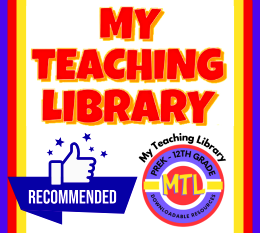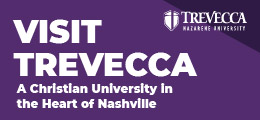Social Success at Home
Our son Luke is 8 years old today. He’s pretty happy with his new Lego sets, but the truth is, I’m the one enjoying the presents! His party was a huge success, he’s happy, he’s calm, he’s loving and kind to others–what more could a mother ask for?
Birthdays, by their very nature, compel us to reminisce over years past. I remember the joy he brought as our firstborn and how much fun it was enjoying him as a baby. Then I remember the toddler years, when it gradually became clear that he was not exactly like other children. Luke was diagnosed at age 2 with a severe speech delay (tested to the equivalent language development of a 6-9 month old baby) and then at age 3 with PDD (pervasive development disorder, which is a fancy way of saying that he falls somewhere along the spectrum of autism).
At that point, we began the long process of weighing and balancing. Treating autism is a daunting task, and every expert has his or her share of opinions. My husband and I were committed to my staying home full-time with Luke, his brother (20 months younger), and the little sister on the way. But considering his diagnosis, we agreed to send him to preschool, feeling he needed that interaction. Though encouraged and even sometimes pushed to seek full-time placements, including 40-hour-a-week programs, we refused. He spent a few mornings a week in a typical preschool setting where various therapists and experts came in to work with him on language, social, and sensory issues. Over the years, he made good progress and even worked up to five mornings a week, but we stuck to our commitment that he would come home by lunchtime each day and that no therapy would take place in the afternoon hours. Some would say that we took a great risk, but my instincts, that “gut nature” the Lord gives mothers, told me that, first and foremost, he needed to be a child. A few hours each morning was plenty.
This worked fairly well for a few years, but then came kindergarten. By this point, Luke’s formal diagnosis was Asperger’s syndrome (considered by some to be a high-functioning form of autism, while others consider it to be a separate entity). I truly agonized over Luke’s kindergarten placement. It had always been our intention to send the children to Christian school and that I would teach there once the youngest had reached kindergarten age. But that vision was stripped away as we discovered that the Christian schools were not open to a child with exceptional needs such as Luke’s. So, with great trepidation, we gave the public schools a try. I researched every placement option in our district and we prayed fervently that the Lord would guide us to what was best for Luke.
You can imagine our dismay when it proved to be disastrous. Only two months into kindergarten, I kept Luke home from school and refused to send him back until they provided what the law refers to as a “free and appropriate” (emphasis on appropriate) educational placement according to the stipulations of the Individuals with Disabilities Education Act. His current classroom setting was self-contained and nowhere near appropriate for him–a point with which the placement team had no choice but to concur. The other option was mainstreaming, but they offered him no in-class support, and I refused to set him up for another failure. After visiting the teacher, I argued that their philosophy of kindergarten made no sense for the most typical child, much less one with exceptional needs! We seemed to be running out of options.
It was not as though I’d never heard of homeschooling. I’d just never considered it for our family. I did not feel that I was like the homeschool mothers I’d known (whatever that means). I also felt that, given Luke’s delays (mainly socializing, communicating, and basically fitting into this world he was not exactly “wired for”), homeschooling would isolate him even more. However, our experience has proved that not to be true.
One day while still in the midst of the school placement crisis, I was grocery shopping with Luke. The younger siblings had not come along this time; it was just the two of us. That was when the Lord spoke clearly to me about what it was we needed to do. You see, grocery shopping used to be a nightmare. Taking Luke out at all would sometimes be a nightmare! We’d had more than our share of painful and embarrassing experiences. Luke’s progress over the years had been so gradual that I often failed to appreciate how far he’d come, but this day was different. I watched him, enjoyed him, and took it all in. He was calm. He was cooperative. He followed directions. He was helpful. He spoke politely to the cashier. He walked alongside me, not running ahead or falling behind. Here he was, exhibiting the exact opposite of everything they were telling me about his behavior at school. Had a teacher or professional therapist worked to accomplish these goals? No. We’d simply lived life together, day after day, through understanding, consistent discipline, and training–and here we were, with far to go, but quite a long way from where we’d started. That was when I got it. I knew what I was meant to do. The Lord had indeed heard and answered our prayers, by showing so clearly the path He intended for us to take.
Our family life completely changed after we pulled Luke from school. My stress level dropped through the floor. No longer did I have to rush to prepare special lunches each morning (Luke is on a restricted diet). No longer did I have to coerce sleepy children to get dressed in a hurry. No longer did I have to pray our way through insane morning rush hour traffic because I refused to put him on a school bus. No longer did I have to write nasty emails to teachers and aides who were ignoring Individualized Education Program requirements. And as an added bonus, the children went through that entire winter without getting sick even once! The calm in our home was so thick we simply breathed it in deep while playing “learning games” (as the kids called them) on the couch in our pajamas. Basically, we just took a few months to recuperate. Luke started playing with his siblings again, and he began enjoying “school” again (I did not use a curriculum, just covered the three R s and pursued his interests through unit studies on bugs and critters and such). He’d always loved learning, and it was good to see that glint back in his eyes. True, I was overwhelmed at times about the years ahead and how this would all play out in the long run (sometimes I still am!). But in truth I was so relieved after what we’d been through that no amount of worrying could convince me that “school” was better than HOME. That point was settled.
Well, back to the present. Luke is 8 years old today. He is a thriving second grader doing grade-level work, despite the obstacles. His specific challenges involve various “symptoms” of Asperger’s syndrome: verbal and auditory processing delays, struggles with working memory, attention challenges, general “busy-ness” (sometimes negatively referred to as hyperactivity), literal-mindedness, dependence on routine, and social “naivety.”
We have several methods for helping him deal with these challenges; I’ll share just a few. Luke’s mind requires associative learning–I must find some way to connect new information to a “file” already stored in his mind. Without associations I might as well be Charlie Brown’s teacher, harping, “Wah wah wah wah wah.” This process looks different for every lesson but often involves having him do something related to the lesson (experience) or using a piece of media (a DVD or computer game) before presenting the “formal” material. One recommendation I will offer is a website called time4learning.com. Their service does have a monthly fee, but I have found it well worth the investment. Luke enjoys the interactive lessons, and after he completes them on the computer he is better able to attend to and make sense of my lesson on the same topic.
The verbal processing and working memory challenges are huge obstacles for him. We actually had an educational psychologist confirm this through vigorous testing. On a visual-spatial test, which required no verbal processing, he scored in the superior range. However, on verbal processing and working memory tests, he scored as low as “borderline retardation.” Now, the psychologist was quick to point out that nothing about this boy is “retarded,” but these results show the great discrepancy between his intellectual potential and what he is often able to produce. To help him with this, we use study methods such as acronyms or songs to help him retain information (he learned our phone number to the tune of “Fur Elise” by Beethoven). We turn Bible verses into “charades” by giving physical actions to the key words. I have a visual aid for every single concept of our school day, no matter how minute. It is amazing to see how differently he responds when I provide these supports, as opposed to assuming that he “got it” simply because I said it.
As for assessing him, I have a dual process there. First of all, I like to know what he truly learned, so I bypass the processing challenges by allowing him to “free flow” through narration. This is a Charlotte Mason technique that allows the child to simply tell the teacher what he or she has learned. I type as he narrates, and he’ll “edit” me; he has become quite good at this and often comes up with details I myself had forgotten. On the other hand, I also want to teach him how to answer formal questions, so I create quizzes based on what we’ve learned each week. It is fascinating to watch him recount the information in great detail through narration, only to completely fail a simple quiz on the same subject matter because he has not understood the questions. We are working on picking out the key words of a question, reading over all the multiple choice options before answering, and using cues (e.g., songs, acronyms) to aid in recall. Sometimes he does well with this, sometimes not, but there is progress, and that is the big picture. One thing I can attest with complete certainty: had we left him in that public school setting, he would not be doing anything near grade-level work.
Above all this, though, I’m thrilled to report that his greatest improvements have been social! The idea that a child with social delays and challenges is well served by immersing him in the jungle that is public school, where the law is “survival of the fittest,” is ludicrous. Children with autism or Asperger’s or similar conditions will never be “the fittest,” and they often pay terrible consequences for their inability to navigate that social world. Homeschooling is not only a viable option for these children, but I will dare to say that it is the ideal option. We’ve seen it, for sure, but others in our life also look at Luke and repeatedly exclaim, “He is not the same child!”
What’s made the difference? First and foremost, he is at peace. He spends his days with people who love him. He knows what to expect, and his anxiety level is down to a baseline. That alone sets him up for success! Additionally, he has his siblings to practice social skills with all day. Therapy? Yes, 24/7 and completely free! Conflict resolution, conversational turn taking, compromise, imaginary play, initiating, leading, following–all take place under this very roof, even as I sit here typing these words! I hang back to let them “work it out,” but I also intervene and guide when needed. This provides perfect opportunities to teach and train, in ways that are meaningful and can be applied to social situations in the future. He is getting it, and the progress has been amazing!
But beyond that, he has friends now, outside our immediate family. This was never true before. I have hand-picked a few activities to ensure that each child has opportunities to pursue his or her interests. Seeing the same faces each week in calm, safe environments has allowed Luke to feel comfortable with a network of other children, and they honestly consider each other to be friends. It takes work and guidance, but it is happening. He invited several of them to his birthday party earlier this week. He engaged with them, enjoyed them, and thanked each one personally. In fact, he appeared so at ease and so “typical” that his father and I marveled at the fact that an outsider looking in, at that moment, would never guess he was so challenged. He even caught the eye of a pretty little girl who could not get enough of him! Indeed, it is far too early for that, but to see little glimpses of what may be one day brought much encouragement my way. Our boy is a good friend to others, and he has friends!
We are completely sold on homeschooling now. Luke is a case in point that a child with challenges and delays is at risk of totally sinking in a public school classroom. I can say with certainty that he would not be performing anywhere near this level, academically, had we not brought him home. But what I want to drive home is the point that the real success has been social! Culture would have us believe that homeschooling is an antisocial choice, but this little boy is proof otherwise. True socialization takes place in the presence of loving adults, respectful peers, and within the parameters of guidance and protection. “Survival of the fittest” breeds bullies and victims, manipulators and braggarts, haves and have-nots. In utter contrast, Luke is kind to everyone he meets, regardless of their status or situation. He can hold a conversation with an adult or a 1-year-old and does so, more often than not, with little help from me. This has been the true success of homeschooling Luke, and I’m so thankful and blessed to get to be a part of it!








































